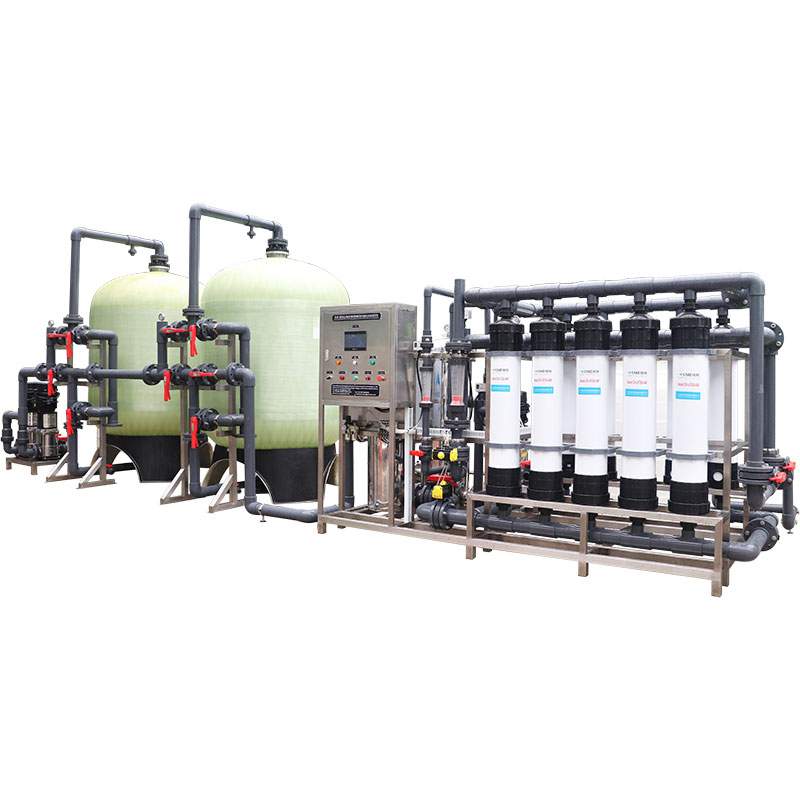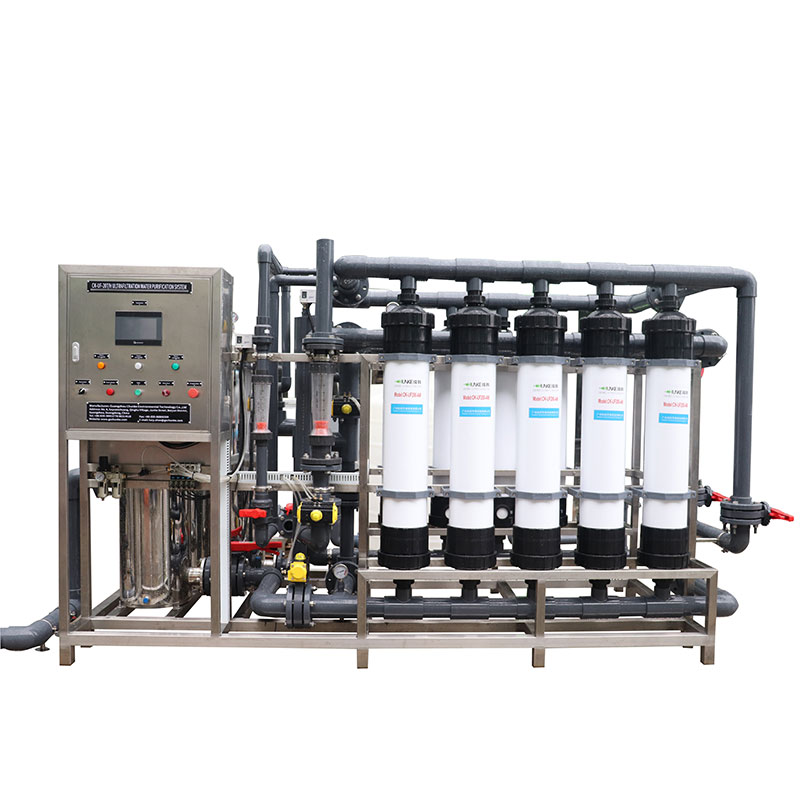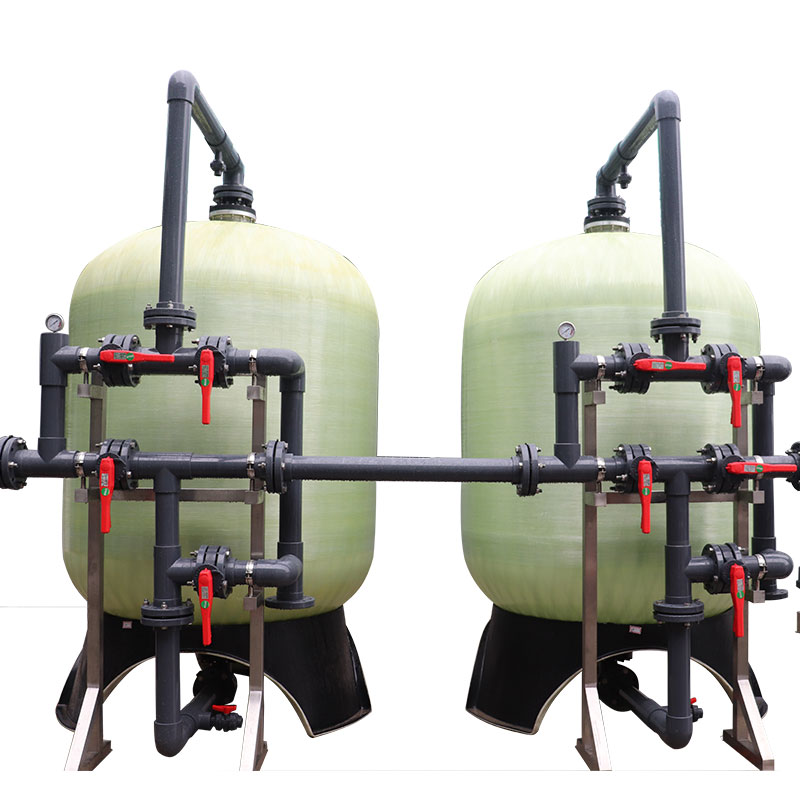What are the disadvantages of ultrafiltration equipment?
As a water treatment process, ultrafiltration equipment not only provides clean water resources, but also has some shortcomings. Understanding these shortcomings is critical to our comprehensive evaluation of the performance and suitability of ultrafiltration equipment. This article will delve into the shortcomings of ultrafiltration equipment so that readers can better understand the advantages and disadvantages of this technology.
Disadvantages of ultrafiltration equipment
The ultrafiltration water treatment system uses ultrafiltration membranes for filtration. Although it has a significant effect in providing clean water quality, it also has some shortcomings. First, the ultrafiltration membrane may be contaminated by NOM (non-biodegradable organic matter), which can significantly affect the performance of the ultrafiltration process. NOM pollution will cause the pores of the ultrafiltration membrane to be blocked, reducing the filtration efficiency and increasing the frequency and cost of cleaning and maintenance.
Secondly, although chemical cleaning methods can reduce membrane fouling to a certain extent, they may also lead to damage to the ultrafiltration membrane. Too frequent chemical cleaning will cause the ultrafiltration membrane to be corroded by chemicals, thereby reducing its service life and increasing maintenance and replacement costs.

How does NOM contamination of ultrafiltration equipment affect its performance?
Effect of NOM pollution on the performance of ultrafiltration water treatment system
NOM contamination is one of the major challenges facing ultrafiltration water treatment systems. NOM is a type of organic substance with high molecular weight and complex structure that often exists in water and easily adheres to the surface of ultrafiltration membranes during the ultrafiltration process. These attached NOM substances will block the pores of the ultrafiltration membrane, causing the filtration efficiency of the ultrafiltration water treatment system to decrease, thus affecting its performance.
NOM contamination will also reduce the throughput of ultrafiltration equipment and increase operating costs. In order to deal with NOM pollution, operators need to perform chemical cleaning regularly, which not only increases maintenance costs, but may also cause damage to the ultrafiltration membrane, thereby reducing the service life of the equipment.
How to effectively deal with NOM pollution of ultrafiltration equipment?
Ways to deal with NOM pollution
Regarding the NOM pollution problem of ultrafiltration equipment, there are some methods that can be taken to ensure the normal operation of the equipment. First of all, regular chemical cleaning is essential, but attention needs to be paid to controlling the frequency and method of cleaning to avoid damage to the ultrafiltration membrane. Secondly, the introduction of pretreatment processes, such as particle filtration or activated carbon adsorption, can be considered to reduce the concentration of NOM pollutants, thereby reducing the impact on ultrafiltration equipment.
In addition, continuous optimization of the operating parameters and process flow of ultrafiltration equipment is also an important means to effectively deal with NOM pollution. By adjusting the operating conditions of ultrafiltration equipment, such as pressure, flow and PH value, the occurrence of NOM pollution can be minimized and the stability and efficiency of the equipment can be improved.

What are the restrictions on the use scope of ultrafiltration equipment?
Limitations of ultrafiltration equipment in treating water quality
Ultrafiltration equipment has some limitations in treating water quality, which are mainly reflected in the following aspects. First, ultrafiltration equipment has limited effect on removing salts and dissolved substances in water. Although ultrafiltration membranes can filter out tiny particles and microorganisms, ultrafiltration equipment is less effective at dissolving substances in water, such as salts and minerals. Therefore, ultrafiltration equipment may not be suitable when dealing with seawater or brackish water containing large amounts of salts.
Secondly, ultrafiltration equipment is sensitive to water turbidity and turbidity. If the water contains a high concentration of suspended solids or turbid substances, ultrafiltration equipment may become clogged or have poor filtration effects, thus affecting treatment efficiency and water quality.
Limitations of ultrafiltration equipment in application scenarios
In addition to the limitations in treating water quality, ultrafiltration water treatment system also has some limitations in application scenarios. First of all, due to the high investment and operating costs of ultrafiltration water treatment system, it may not be suitable in some areas with scarce resources or poor economic conditions. In addition, ultrafiltration water treatment systems are large in size and require certain sites and facilities for installation and operation, which also limits their application in areas with limited space or poor facilities.

How to solve the shortcomings and limitations of ultrafiltration equipment?
Improve ultrafiltration membrane materials and processes
In order to solve the membrane fouling problem of ultrafiltration water treatment system, its anti-pollution ability can be improved by improving the ultrafiltration membrane materials and processes. Developing more durable and pollution-resistant ultrafiltration membrane materials and optimizing the operation and maintenance processes of ultrafiltration water treatment systems can effectively reduce the problem of membrane pollution and improve the operational stability and lifespan of ultrafiltration water treatment systems.
Combined with other water treatment processes
In order to overcome the limitations of ultrafiltration equipment in treating specific water quality, it can be combined with other water treatment processes to improve the overall treatment effect. For example, ultrafiltration equipment can be combined with reverse osmosis technology or ion exchange technology to improve the removal efficiency of salts and dissolved substances. At the same time, pretreatment processes, such as sedimentation, flocculation, etc., can also be used to reduce turbid substances in the water and improve the operating efficiency of ultrafiltration equipment.
Technological innovation and cost control
In order to reduce the investment and operating costs of ultrafiltration equipment, the economy and feasibility of ultrafiltration equipment can be improved through technological innovation and cost control. For example, more energy-saving and environmentally friendly ultrafiltration equipment can be developed to reduce energy consumption and environmental pollution. At the same time, the design and manufacturing process of ultrafiltration equipment can also be optimized, reducing the manufacturing cost and operating cost of the equipment, and improving its competitiveness in the market.




